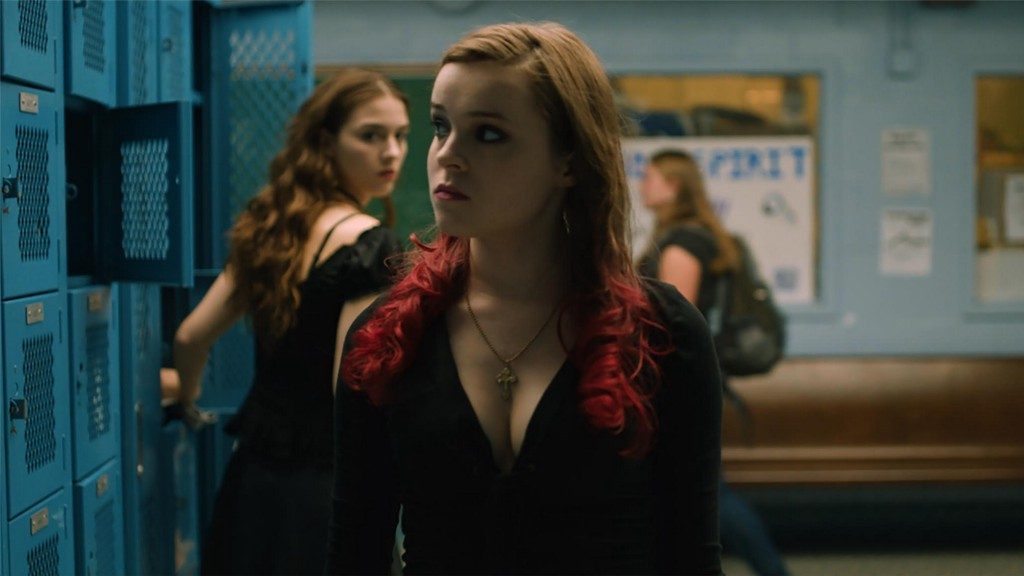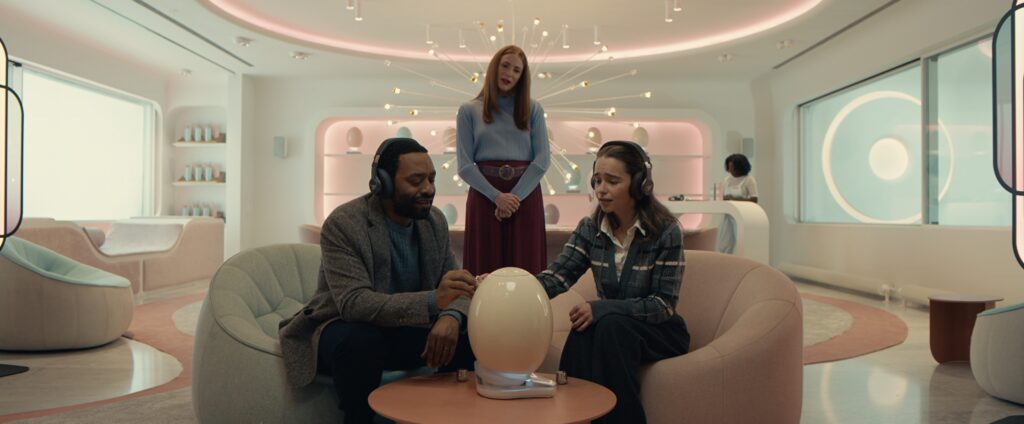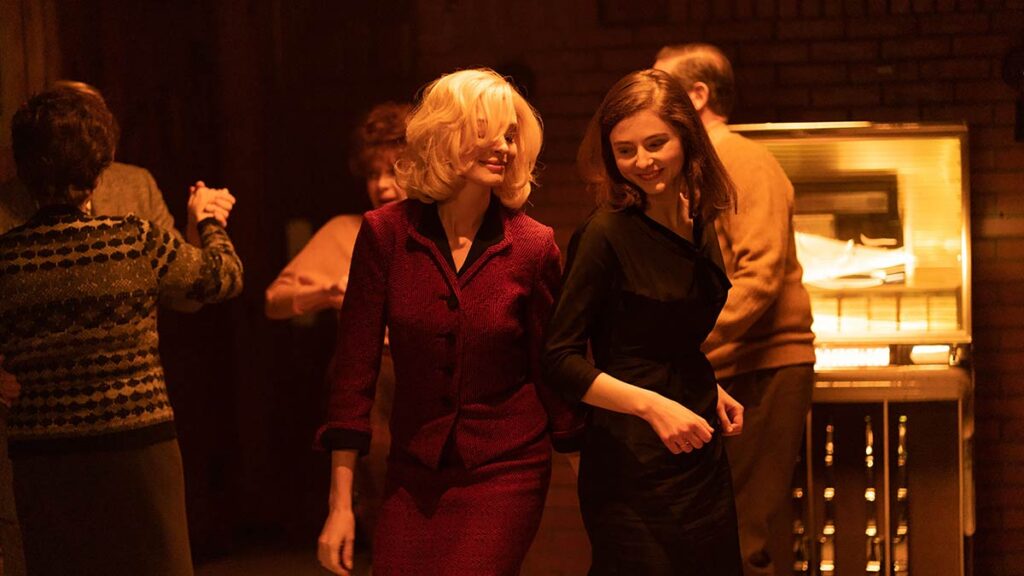As an actress, Quinn Shephard is best known for Paul Feig’s “Unaccompanied Minors and “Hostages” on CBS. Her upcoming films include “Sweet, Sweet Lonely Girl” and Desiree Akhavan’s “The Miseducation of Cameron Post.” Her directorial work includes the short film “Till Dark.” “Blame,” which she directed at just 20 years old, is her feature debut.
“Blame” will premiere at the 2017 Tribeca Film Festival on April 22.
W&H: Describe the film for us in your own words.
QS: “Blame” tells the story of two girls who find themselves deeply entangled in rivalry when their new substitute drama teacher casts one over the other as Abigail Williams in their high school production of Arthur Miller’s “The Crucible.”
The film draws many parallels to the play, and it delves into the psyche of modern teens in a way that vacillates between the raw and dreamlike, mirroring the perspective of the young protagonists’ coming-of-age.
W&H: What drew you to this story?
QS: When I was a sophomore in high school, I was cast as Abigail Williams in a regional production of Arthur Miller’s “The Crucible.” At 15, it was the most mature role I’d ever played, and the experience had a tremendous impact on me.
Beyond my fascination with the play, embodying Abigail had a strong influence on my day-to-day life. It changed the way I perceived both myself and the world around me. The role innately tied into my own coming-of-age; I felt powerful for the first time.
The script for “Blame” was born, not only from imagining what Abigail’s story would look like set in a modern day high school, but also from observing the way she changed my own perspective, and heightening that to a fictional level.
W&H: What do you want people to think about when they are leaving the theater?
QS: “Blame” begins with a lot of familiar characters in a prototypical all-American high school; it plays into tropes and stereotypes in a way that pokes a bit of fun. But by the end, all of that is turned on its head. We see a lot of films about student-teacher relationships, about girl-to-girl rivalries, but this rarely portrayed from such a young and brutally honest perspective.
I hope the final act makes people question the judgements they made at the beginning of the film — and maybe even reactions they’ve had to films on similar subjects in the past. It’s important to me that every character is intimately understood and humanized by the time the credits roll.
W&H: What was the biggest challenge in making the film?
QS: Ha! Can I say everything? “Blame” was pretty much a two-woman show. My mom and I produced the film together — by ourselves. We did everything — and I mean everything. It was all-day, everyday, for years. I totally gave up on having a normal life. We literally poured every bit of energy and money we had into this film!
We were doing so many things for the first time, learning as we went. But what came out of it is something beautiful that we are both tremendously proud of.
If I was going to single out a challenge, music is the part I completely underestimated. I found every musician you hear in the film myself. My mom and I had to teach ourselves music law. I was there for the writing and production of 90 percent of the songs.
It was months and months of work, but luckily I gathered a team of generous and talented artists, including my amazing composer Peter Henry Phillips, who I found by chance at a Quebec City music festival! I was literally walking past the venue on the street and heard his music. I was so drawn in that I convinced my family to stay for the show. My mom encouraged me to approach him after his set and he ended up scoring the film.
W&H: What does it mean for you to have your film play at Tribeca?
QS: It’s an incredible honor. I am an east coast girl through and through, and I truly love New York. I have been to Tribeca many times as an audience member, but never as a director. They have shown tremendous support for the film, which means a lot. And my entire cast and crew is NY-based, so it is shaping up to be one big reunion for us!
W&H: What’s the best and worst advice you’ve received?
QS: The best advice I’ve received was the repeated advice to just go for it, over and over, from my mom. Even when I was 15, it was, “You can direct a movie! You can get your favorite actor to star in it! We can make this happen!” I never doubted my ability to achieve my dreams because I was repeatedly told, “Why not?”
Years before “Blame” happened, we used to watch Chris Messina in movies and talk about him starring in the film as if it was already a reality. I don’t think I would have had the guts to track down his email and write to him if my mom didn’t constantly tell me my dreams were plausible, realistic goals. It gave me so much confidence from such an early age.
In my opinion, the worst advice I’ve received was during our early test screenings. I was advised to cut a few scenes from “Blame” that made test audiences uncomfortable. From my perspective, there is nothing about the topics I examine in my film that should be easy to swallow. The point is to shoot a scene that is beautifully composed, sexy, and familiar, but make it raw and realistic to the point where you start to question the beauty of it, and you’re forced to face what the scene is really about.
I want people to be uncomfortable. And if those scenes don’t make you uncomfortable — that’s part of the self-reflection. Why not?
W&H: What advice do you have for other female directors?
QS: To stick to their vision with full confidence and have faith in their gut instinct. All of the female directors I admire have unwavering, exceptionally strong visions for their films.
It’s easy in an industry like this to feel like women’s voices need to be softer, flexible, or more apologetic. Screw that. Women know what they want, and their stories and ideas are just as important as those of their male colleagues — maybe even more so!
W&H: Name your favorite woman-directed film and why.
QS: It is so hard to pick a favorite. I’d have to say it’s a toss-up between Andrea Arnold’s “Fish Tank,” Marielle Heller’s “The Diary of a Teenage Girl,” and Céline Sciamma’s “Girlhood.”
“Fish Tank” and “Girlhood” are big tonal references for me as a filmmaker. The magical realism and distinctive color palette of “Girlhood” and the intimacy of certain scenes in “Fish Tank” — the scene where Michael Fassbender and Katie Jarvis are wading in the pond comes to mind — just take your breath away.
“Diary of a Teenage Girl” is perfect. It’s funny, tragic, relatable, heartbreaking, and celebratory. Most importantly, the film shows not a shred of judgement for its protagonist.
Runners up are Kimberly Peirce’s “Boys Don’t Cry,” Elizabeth Wood’s “White Girl,” Lynne Ramsay’s “We Need to Talk About Kevin,” and, of course, Sofia Coppola’s “The Virgin Suicides.”
W&H: There have been significant conversations over the last couple of years about increasing the amount of opportunities for women directors yet the numbers have not increased. Are you optimistic about the possibilities for change? Share any thoughts you might have.
QS: I am optimistic because women are amazing, and we’ll fight ten times harder for what we deserve. It’s a tough industry, and unfortunately gender bias is very real. But, the more I see festivals like Tribeca taking strides towards more diversified lineups of directors, the more I see possibility for change.
Hopefully, the major production companies will eventually stop seeing certain films as designated “women’s stories” and will recognize that the pool of working female directors out there in the world are equipped to tackle any topic with the same versatility as men!







